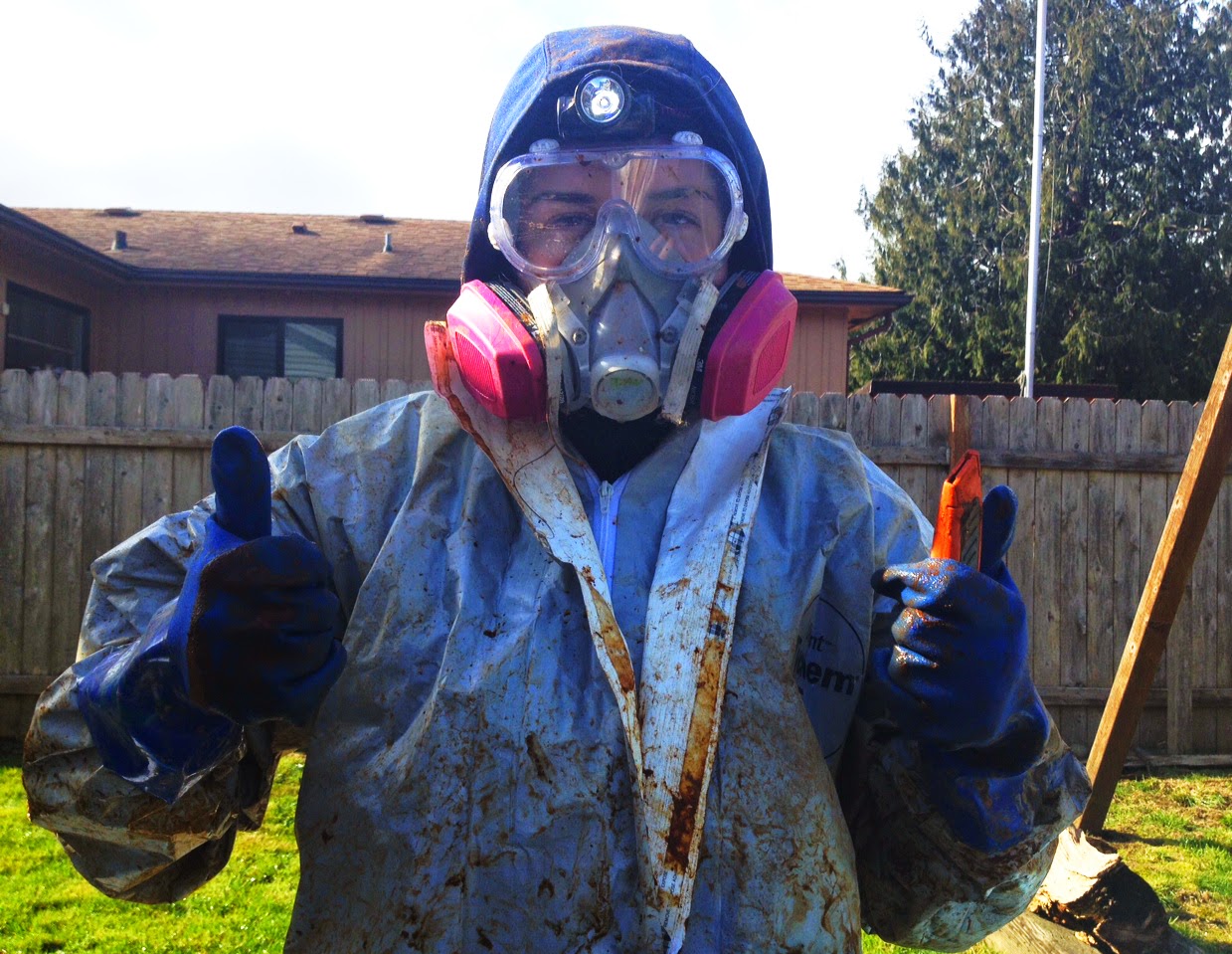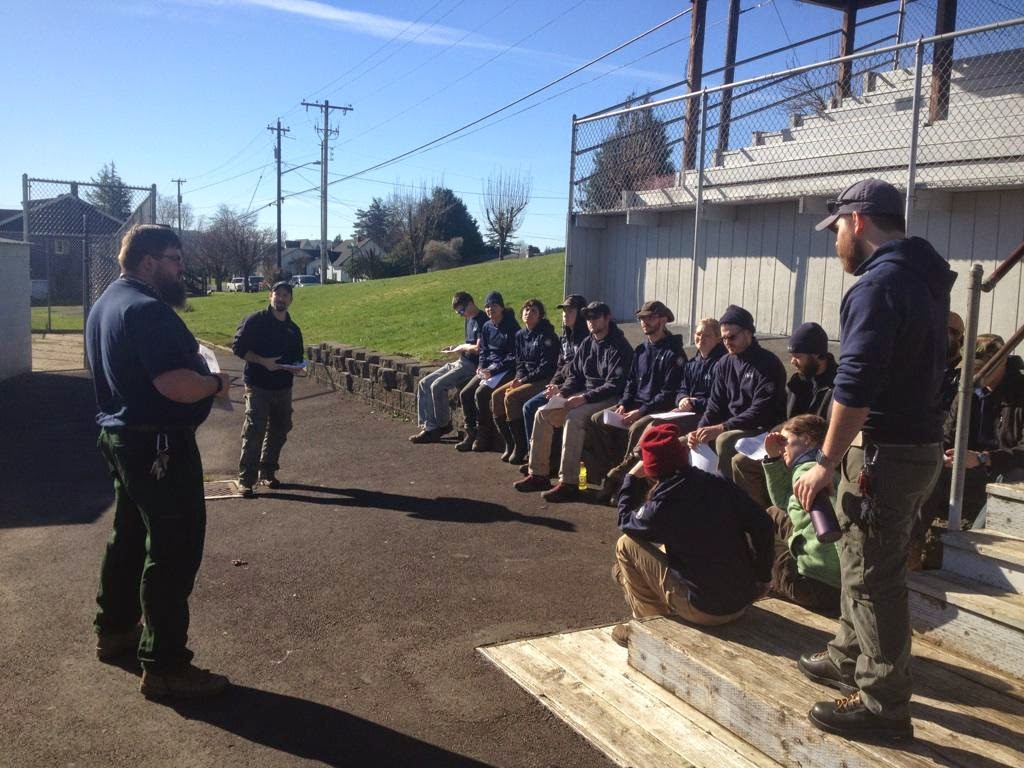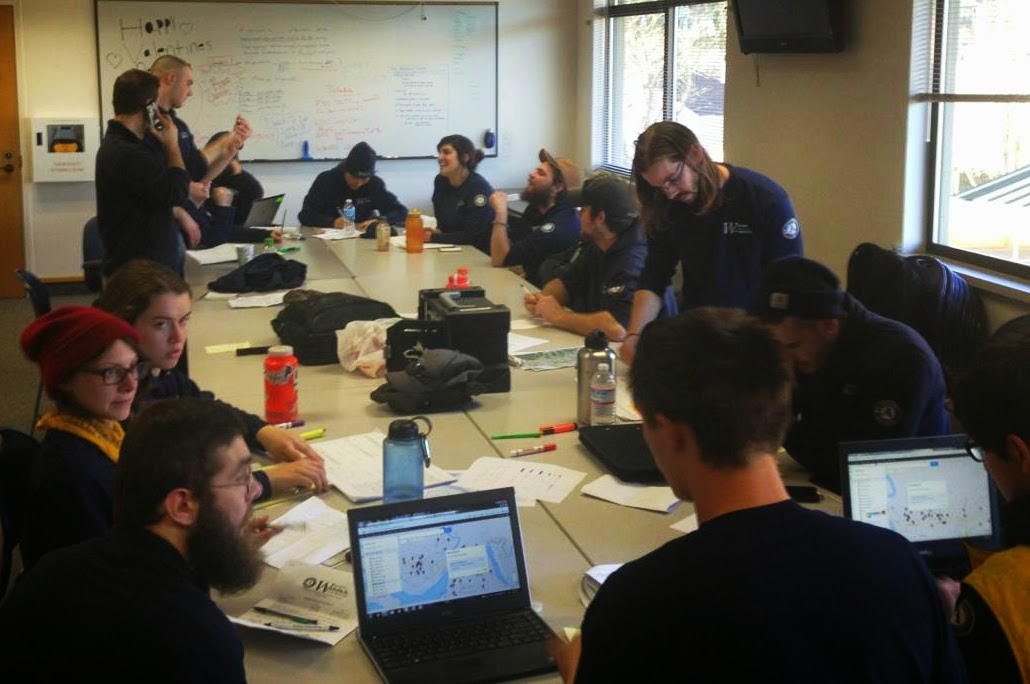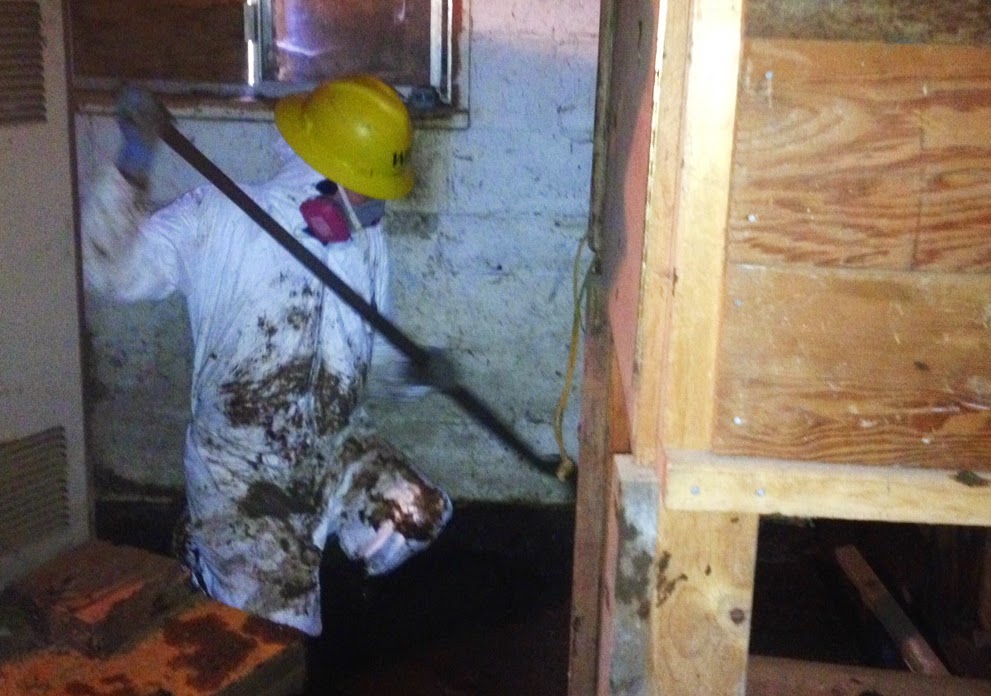
This is the story of AmeriCorps member Ian Nickel and his experience helping with flood relief in Grays Harbor. Ian and his Washington Conservation Corps (WCC) crew deployed to help the people of Hoquiam recover after they suffered severe flooding in January. He is a member of Ecology's WCC Olympic National Park Disaster Response Crew. Below is his experience helping a community clean up damage and put their lives back together.
Why I chose disaster response
Starting a new year I thought, "If my crew deploys, we might serve on similar disasters to those that WCC has responded to in the past - Joplin tornadoes, Hurricane Katrina, super storm Sandy or even the Carlton Complex wildfire."
Helping in Hoquiam
Instead of responding on a national scale, we were sent just a few hours south of my home to assist with flood recovery efforts in Aberdeen and Hoquiam. Prior to deploying, I had not heard much about the flooding on local or national news. As we were driving, I wondered, “How bad could this really be? What did these communities need our crews to do?”
Our first day at Grays Harbor Department of Emergency Management was filled with planning: meeting other crews, briefing on safety and dividing the projects in sections. After creating our plan, we contacted affected homeowners.
My first phone call was surely awkward to witness. I had practiced my speech, but had not prepared for voicemail. As I waited to leave a message, I forgot everything I had rehearsed. Several seconds of silence ticked by before I realized I was leaving a blank recording, so I quickly read my prompt and hung up. I turned to my fellow crew members who were holding in laughter. One chimed in, “Well, that didn't go well, but there are always more phone calls to make!”
Boots on the ground
We spent the rest of the week checking properties for flood damage. After assessing inside a house, we moved to the crawl space to check for wet insulation. Some houses had little to no interior damage, but often, the homeowner had been unable to check their crawlspace for mold. After these assessments, we would prioritize houses based on the level of damage and need. Many residents were living in unhealthy mold-infested conditions, making their homes high priority.
Meeting homeowners in person made their stories human, rather than just a number on paper. Through these interactions, I started to grasp the severity of the situation. When we first arrived, there were few visible signs of flooding; no sandbags lining the streets or shops closed due to water damage.
As that first week ended, I realized that we were not here to help an entire town. Instead, we were helping several dozen individuals and families who were physically and financially unable to recover. After a week of assessing damages, we received our next assignment: a volunteer clean up day scheduled for that Saturday.
180 volunteers turn up to help
I had been the president of our environmental coalition in college so my experience with volunteer events typically included 15 volunteers or so. Not bad for a small group based in central Nebraska. When I learned that we would each lead eight to 10 volunteers, I thought, “Eh, this will be pretty easy. I can deal with 10 people." We had 25 AmeriCorps members and five WCC staff ready to lead.
That Saturday morning, more than 180 adults and 35 children arrived, ready to volunteer. The support from the local community and beyond was amazing with volunteer groups arriving from Lacey to northern Oregon. A Skagit County based WCC crew brought items donated by Willie Harper, the fire chief from Oso. Shovels and personal protective equipment no longer needed by Oso were of great use to volunteers in Grays Harbor.
The Incident Management Team, Coastal Community Action Program, and LeMay Inc. (a local waste disposal company) completed much of the coordination. Our job was to wait for our volunteers to find us, assign them their tools and protective gear, and lead the way. As I waited for my group, I thought to myself, “I hope they like to get dirty and know a thing or two about tools. If not, we will complete fewer houses, but that will be okay.” I was pleasantly surprised at my group’s strength and eagerness to work! The hardest part was finding projects to keep them busy.
Despite this being the largest and most stressful event that I have ever assisted with, the projects completed for happy and relieved homeowners is something I will never forget. These times of hardship bring out the beauty in communities.
The true essence of community
While reflecting on my time in Grays Harbor, I keep remembering one homeowner who had moved into their house just eight days before the floods. While their home did not have water damage, a landslide had covered their entire backyard and destroyed part of their patio. The homeowner told me about her co-workers who, after realizing that she had suffered the most damages, gathered 30 members of their friends and families to help her. 30 people! The homeowner’s friends, family and co-workers arrived with shovels in hand and wheelbarrows ready to go, demonstrating the true essence of a community.
After this experience, I cannot help but think about my own local community. How are my neighbors doing? Are there hungry people where I live? What about those without homes? At the end of the day, I know it will be neighbors helping neighbors when a disaster strikes. I learned from my experience in Grays Harbor that I want to be one of those neighbors.
More about WCC
Our Washington Conservation Corps program consists of three subprograms: the original WCC, Veteran Conservation Corps, and Puget SoundCorps. These programs give young adults and military vets meaningful service and training opportunities that often include environmental projects and disaster response.
Learn how you can apply to be a member on Ecology’s WCC webpage.





